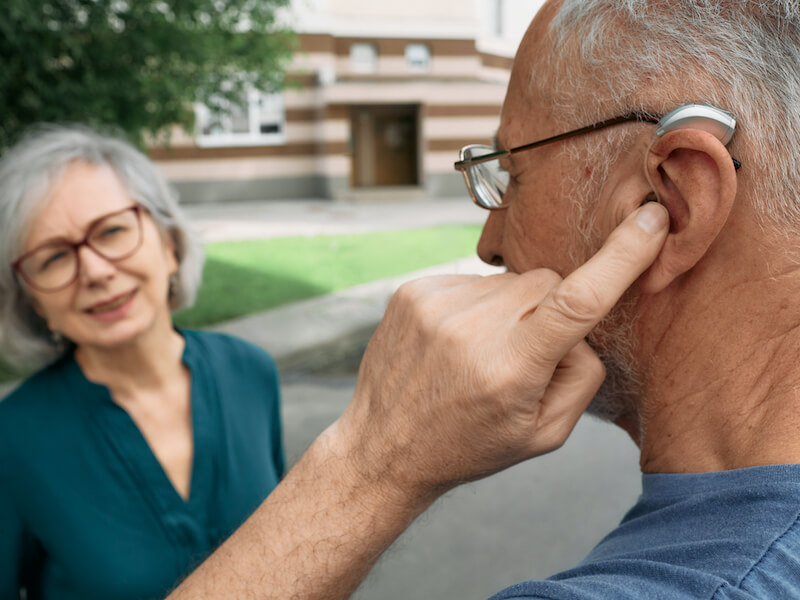
Have you ever been watching your favorite Netflix movie when your internet abruptly disappears? You sit and watch that spinning circle instead of learning about who won that cooking competition. All you can do is wait around for it to come back. Perhaps it’s your modem, could be your router, possibly it’s the internet provider, or possibly it’ll just fix itself. It kind of stinks.
When technology malfunctions, it can be very aggravating. The same is certainly true of your hearing aids. Most of the time, your hearing aids will provide you with the means to stay connected to loved ones, have conversations with co-workers, and keep up with your neighbors.
But your symptoms of hearing loss can suddenly become extremely frustrating when your hearing aids stop working. The technology you’re counting on has let you down. How do hearing aids just quit working? So how do you deal with that? Here are the three common ways your hearing aids can fail and how to troubleshoot and identify them.
Hearing aids can often have three common issues
Hearing aids are complex devices. Even still, there are some common issues that individuals with hearing aids might encounter. Let’s take a look at possible causes of these problems and potential fixes.
Whistling and feedback
Perhaps you suddenly start to hear a terrible high-pitched whistling while you’re attempting to have a conversation with a friend or family member. Or maybe you detect a little bit of feedback. You start to think, “this is strange, what’s up with this whistling”?
Feedback and whistling can be caused by these possible issues:
- The tubing that attaches the hearing aid with the earmold, on behind-the-ear models, can occasionally become compromised. Take a close look to identify whether the tube may have detached or might be compromised somehow.
- Your hearing aids might not be seated in your ears correctly. Try to remove them and re-seat them. If the fit isn’t right you may need to come see us so we can help you get a better fit.
- The functionality of your hearing aid can be impacted by earwax buildup in your ear canal. This is a relatively common one. That includes making your hearing aid whistle or feedback. If possible, you can try clearing some earwax out of your ear or consult with us about the best way to do that (do not use a cotton swab).
Depending on the underlying cause of the feedback, we can help you deal with these issues if you can’t figure them out on your own.
Hearing aids not generating sound
The main objective of hearing aids is to generate sound. That’s their main function! So if you find yourself thinking, “I can’t hear any sound coming from my hearing aid,” well, then something is definitely wrong. So what could be the cause when hearing aids work but no sound comes out? Here are a few things to look for:
- Batteries: Be sure your batteries are completely charged. And whether your batteries are rechargeable or not, it may be worth switching them out for fresh ones.
- Earwax buildup: Yup, earwax strikes again. Inspect your device for indications of earwax on the microphone or speakers or any sensitive parts. Keep your device really clean.
- Your settings: If you have them, cycle through your custom settings. Your hearing aids may think you’re in a very large room when you’re actually in a small room because the setting isn’t right. This balance could throw off the sound you’re hearing.
- Power: Everybody forgets to turn their hearing aids on once in a while. Make sure that isn’t the issue. This possible issue can then be eliminated..
We are here for you if these steps don’t clear up your issues. Whether repair, maintenance, or replacement is your next step, we will be capable of helping you figure that out.
Your ears hurt when you’re wearing your hearing aids
What if your hearing aids work perfectly, but whenever you put them in your ears, your ears start hurting? And you’re most likely thinking: why do my ears ache when I use my hearing aids? You’re not as likely to wear your hearing aids every day if they make your ears hurt. So, why do they ache?
- Time: Getting accustomed to your hearing aids will take a little while. How long it takes will depend on the individual. When you first get your new hearing aids, we can help you get a realistic concept of the adjustment period you can expect. If uncomfortable ears continue, talk to us about that too!
- Fit: The fit of the device is the most evident problem. After all, most hearing aids work best when they fit tightly. Which means that there can occasionally be pain involved in a poor fit. Some hearing aid models can be fit to the particular shape of your ears. The better the fit, the fewer issues you’ll have with pain over the long haul. If you come in for a consultation, we can help you get the best fit for your device.
Take your new hearing aid out for a test ride
One of the best ways to prevent possible problems with hearing aids is to take them out for a bit of a test run before you commit. In the majority of cases we’ll let you try out a set of devices before you determine that’s the set for you.
In fact, we can help you figure out the best type of hearing aid for your requirements, adjust the fit to match your ears, and help you manage any extended problems you might have with your devices. In other words, when your devices stop working, you’ll have a resource that can help!
And that’s a lot more than you will get from an over-the-counter hearing aid!